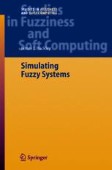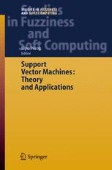Search
Search Results
-
Fuzzy Estimation
sThe first thing to do is explain how we will get fuzzy numbers, and fuzzy probabilities, from a set of confidence intervals which will be...
-
Voice Recognition with Neural Networks, Fuzzy Logic and Genetic Algorithms
We describe in this chapter the use of neural networks, fuzzy logic and genetic algorithms for voice recognition. In particular, we consider the case...
-
Application of Evolutionary Algorithms to Global Cluster Geometry Optimization
This contribution focuses upon the application of evolutionary algorithms to the nondeterministic polynomial hard problem of global cluster geometry...
-
Prediction of Crystal Structures Using Evolutionary Algorithms and Related Techniques
Methods, evolutionary and systematic search approaches, and applications of crystal structure prediction of closest-packed and framework materials...
-
Fuzzy Subsets and Fuzzy Subgroups
The pioneering work of Zadeh on fuzzy subsets of a set in [53] and Rosenfeld on fuzzy subgroups of a group in [43] led to the fuzzification of...
-
Fuzzy Caley's Theorem and Fuzzy Lagrange's Theorem
We begin our discussion with properties of normal fuzzy subgroups. Fuzzy analogs of some group theoretic concepts such as cosets, characteristic...
-
Fuzzy Subgroups of Abelian Groups
Some of the best examples of algebraic structure theory come from commutative group theory. Commutative group theory is also a principal reason for...
-
Random Voronoi Ensembles for Gene Selection in DNA Microarray Data
Currently, cancer and other complex pathologies are analyzed mainly by morphological classification. In the past few decades there have been dramatic...
-
Cancer Classification with Microarray Data Using Support Vector Machines
Microarrays (Schena et al. 1995) are also called gene chips or DNA chips. On a microarray chip, there are thousands of spots. Each spot contains the...
-
Class Prediction with Microarray Datasets
Microarray technology is having a significant impact in the biological and medical sciences and class prediction will play an increasingly important...
-
Structural Models
The goal of structural modelling is to define all signal paths in a system.1 So for every possible signal path, the structural model has to determine...
-
General Reconfiguration Problem
In this chapter, a formal definition of the reconfiguration problem is developed. While the general idea of reconfiguration may appear obvious, there...
-
Basic Structural Properties
It is possible to attribute properties to a system structure. These properties are called structural properties, and they hold for almost all systems...
-
Reconfiguration of the 3-Tank System
The 3-Tank experiment is shown in Fig. 16.1. It consists of three tanks, which are connected via the valves u2, u3 and u4. Pumps can bring water into...
-
A Dynamic Model of Gene Regulatory Networks Based on Inertia Principle
In molecular biology, functions are produced by a set of macromolecules that interact at different levels. Genes and their products, proteins,...
-
Support Vector Machines for Signal Processing
This chapter deals with the use of the support vector machine (SVM) algorithm as a possible design method in the signal processing applications. It...
-
Theoretical and Practical Model Selection Methods for Support Vector Classifiers
In this chapter, we revise several methods for SVM model selection, deriving from different approaches: some of them build on practical lines of...
-
Epilogue – Towards Develo** A Realistic Sense of Artificial Intelligence
So far, we have considered how the artificial mind system based upon the holistic model as depicted in Fig. 5.1 (on page 84) works in terms of the...
-
A Feature/Attribute Theory for Association Mining and Constructing the Complete Feature Set
A correct selection of features (attributes) is vital in data mining. For this aim, the complete set of features is constructed. Here are some...
-
Incremental Mining on Association Rules
The discovery of association rules has been known to be useful in selective marketing, decision analysis, and business management. An important...
